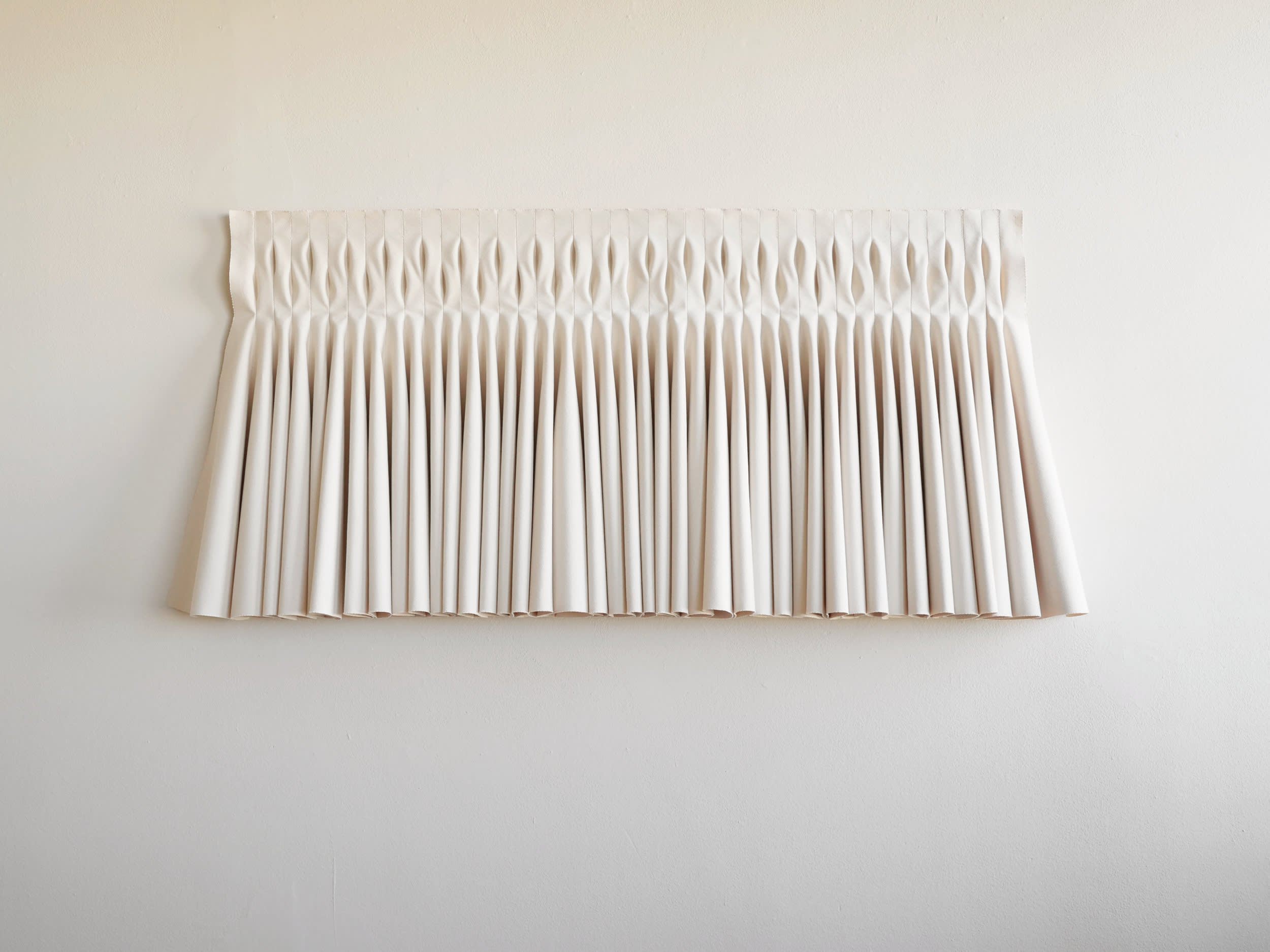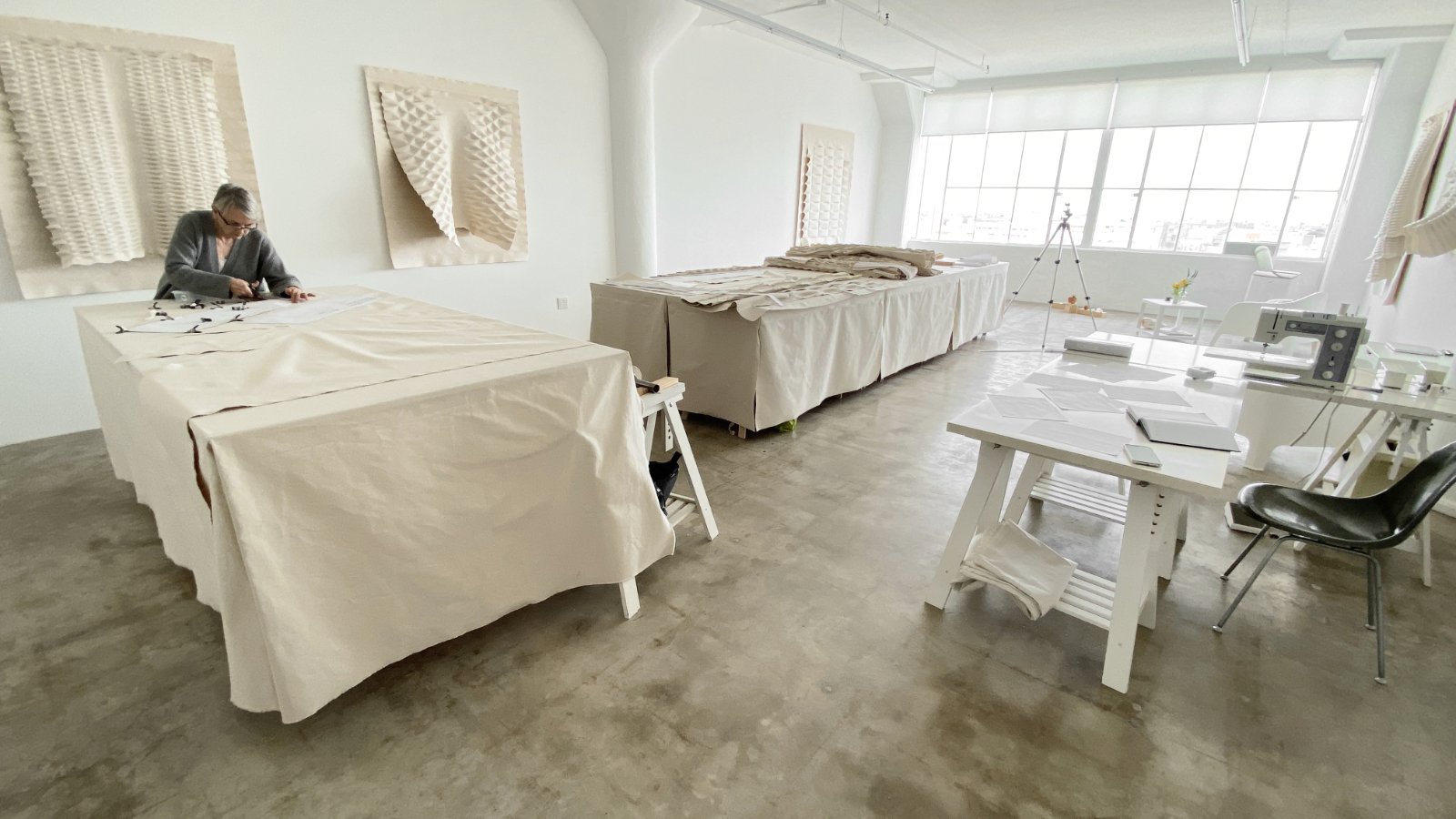Irish born, Los Angeles-based artist Mary Little is renowned for her sculptural canvas reliefs, which exist at the intersection of painting, sculpture, and textile arts. Defined by a quiet minimalism, her work features soft, flowing forms meticulously shaped through fabric manipulation, resulting in structured, three-dimensional surfaces that evoke both movement and stillness.
We had the pleasure of engaging in a brief Q&A with Mary, exploring her artistic practice and the inspirations behind her work.

Mary Little in studio
A+W: What draws you to working with fabric as your primary medium?
LITTLE: Fabric manipulation is a skill that I, as a young shy girl, could develop on my own with just scissors, needles and thread. I come from a large family and had quite a weak education, so developing a craft on my own allowed me to be invisible and thrive in my own private world. I feel that after a lifetime of working with cloth I can sculpt it in a way that’s both intuitive and precise.
"MY WORK ISN’T ABOUT ADHERING TO THE TRADITIONS OF ANY ONE DISCIPLINE BUT ABOUT CREATING A SPACE OF MY OWN." -LITTLE
 Dunbride, 2025
Dunbride, 2025
A+W: Given that your work straddles painting, sculpture, and textile arts, do you ever feel a tension between these disciplines? Or do you find freedom in the fact that your work doesn’t fit neatly into one category?
LITTLE: I find freedom in existing at the edges. I’ve never been drawn to fitting neatly into a category, and when I do, I instinctively look for ways to evade it. My work isn’t about adhering to the traditions of any one discipline but about creating a space of my own.
A+W: Your pieces often have a quiet, minimal aesthetic. What inspires this approach?
LITTLE: It reflects my reserved nature. Even as I’ve grown more open over the years, I continue to value and protect this aesthetic. There’s something profound about restraint—how much can be said with so little.
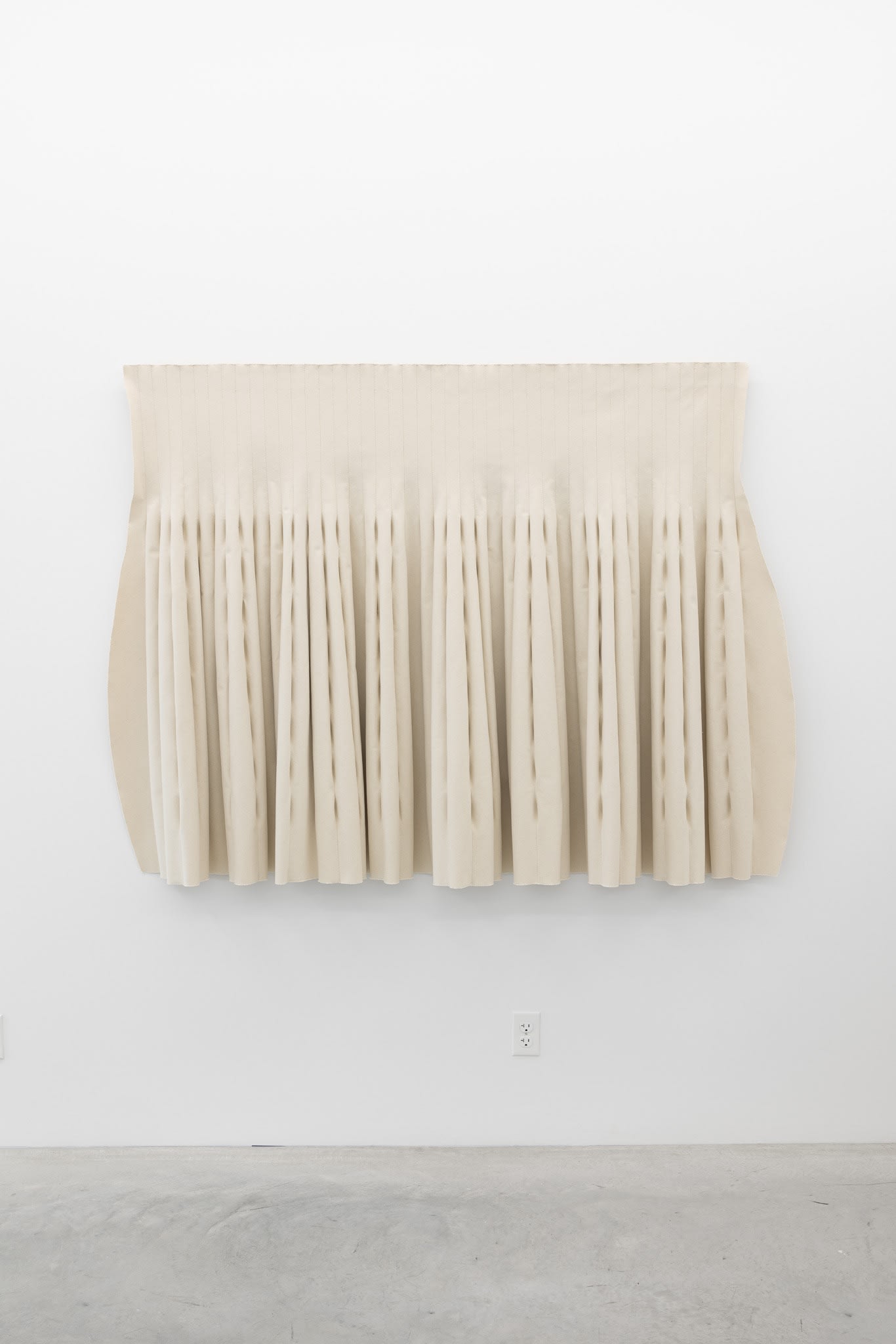 Yew, 2024
Yew, 2024
A+W: Do you ever feel influenced by other artists working in soft sculpture or textile-based abstraction, or do you look for inspiration outside of the art world?
LITTLE: I don’t identify as a fiber artist, though I admire certain figures in that world, like Olga de Amaral, whose work I recently saw in person for the first time. I was so taken by her mastery of color and texture. My background is in furniture design, and while I’ve touched the edges of fiber art, I don’t fit easily into that category. I don’t weave, knit, embroider, or dye fabric, but I do understand how to intuitively shape cloth into sculptural forms. My influences come more from the Irish landscape, and 20th-century artists like Barbara Hepworth, Ellsworth Kelly, and Martin Puryear.
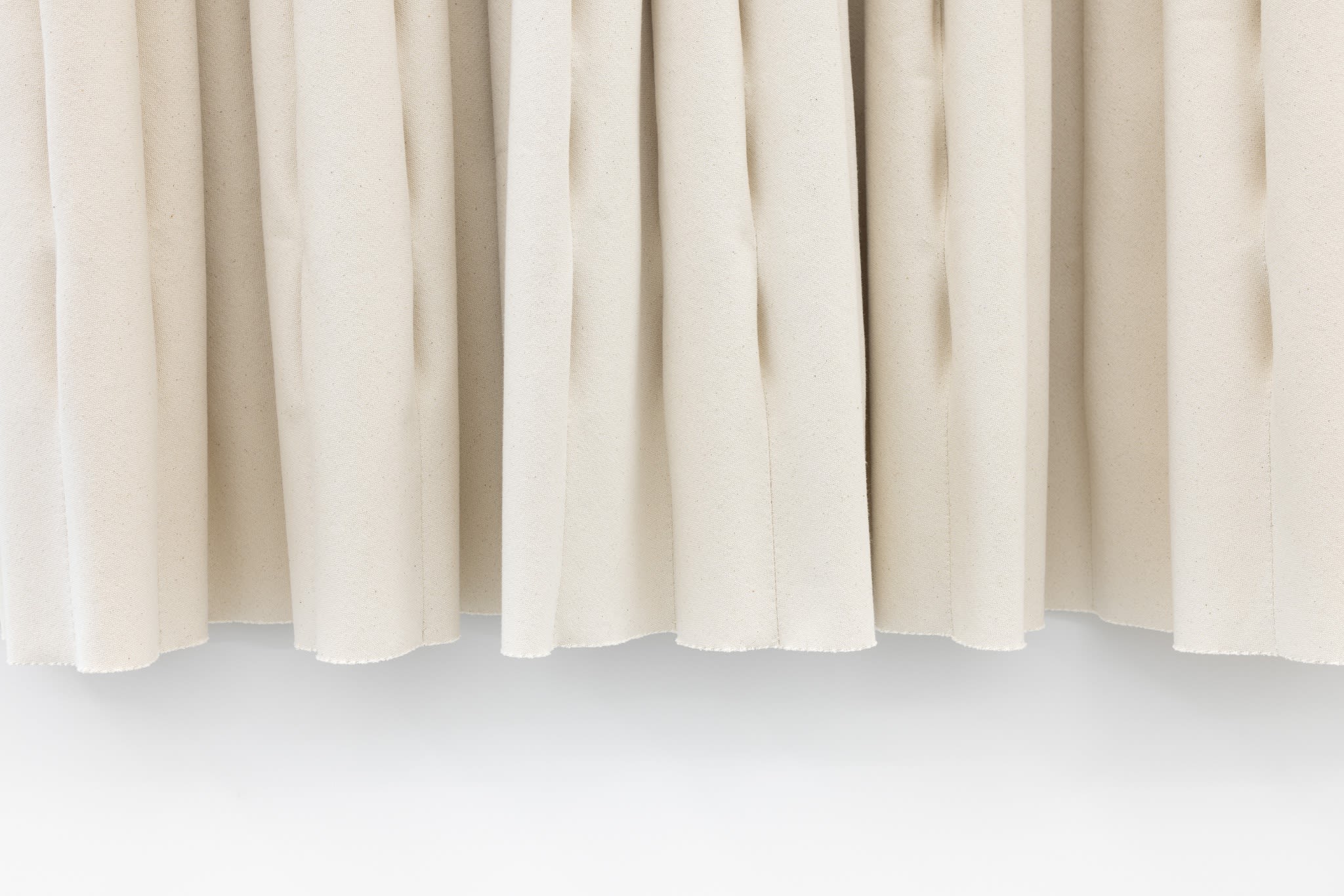
Detail of Yew, 2024
A+W: Many of your pieces feature subtle curves and folds. How do these forms emerge? Are they pre-planned, or do they develop intuitively? Do they evolve from previous pieces, or do you consciously push yourself toward new directions?
LITTLE: My experience in furniture-making, particularly upholstery, plays a big role. I see cloth as a supple sheet material that I can give structure to through cutting and sewing. Upholstery taught me how to fit cloth over complex shapes, and that understanding naturally translated into the canvas reliefs I create now. When I start a new work, I consider it in relation to previous works. I’m influenced by how I feel, and express that when I choose to be exuberant or restrained–I want both aspects of my emotions to be represented in each new body of work. Within each series there’s always a balance between works that evolve ideas, and those that result from new thinking.
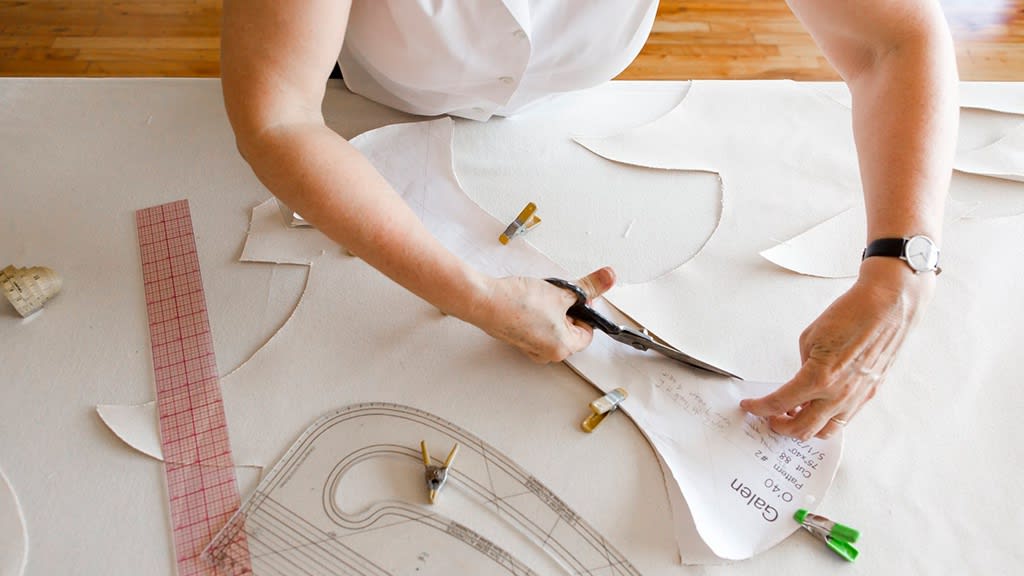
Little in studio, image by Madison Metro
A+W: How does scale affect your decision-making? Do you approach smaller works differently than larger ones in terms of form, tension, or movement?
LITTLE: I’ve found that my material and process work best at a larger scale. Large works allow the canvas to engage with gravity in unpredictable ways, sometimes creating a dynamic tension. That experience is freeing, it feels like having a wild gallop on a horse. But I also enjoy working at a smaller scale, to me that’s around 60 x 40 inches, where I can focus on precision and control—this feels more like dressage, it’s disciplined and deliberate. Ensuring I work at both scales helps me thrive creatively.
Rosemary, 2023
A+W: When preparing for Interwoven Gestures, how did your latest painting Dunbridge evolve? Did it emerge from a specific idea, or did it take shape more organically?
LITTLE: Dunbridge has its roots in Yew from my Hedgerow series, and also in Florence from my Lineage series. Originally I made a single large central form, but when it was hung I realized it lacked structure—it folded in on itself too randomly. I eventually pulled it apart, inserted a central channel, and created two defined vertical forms instead. That change gave the form a sense of clarity and intention.
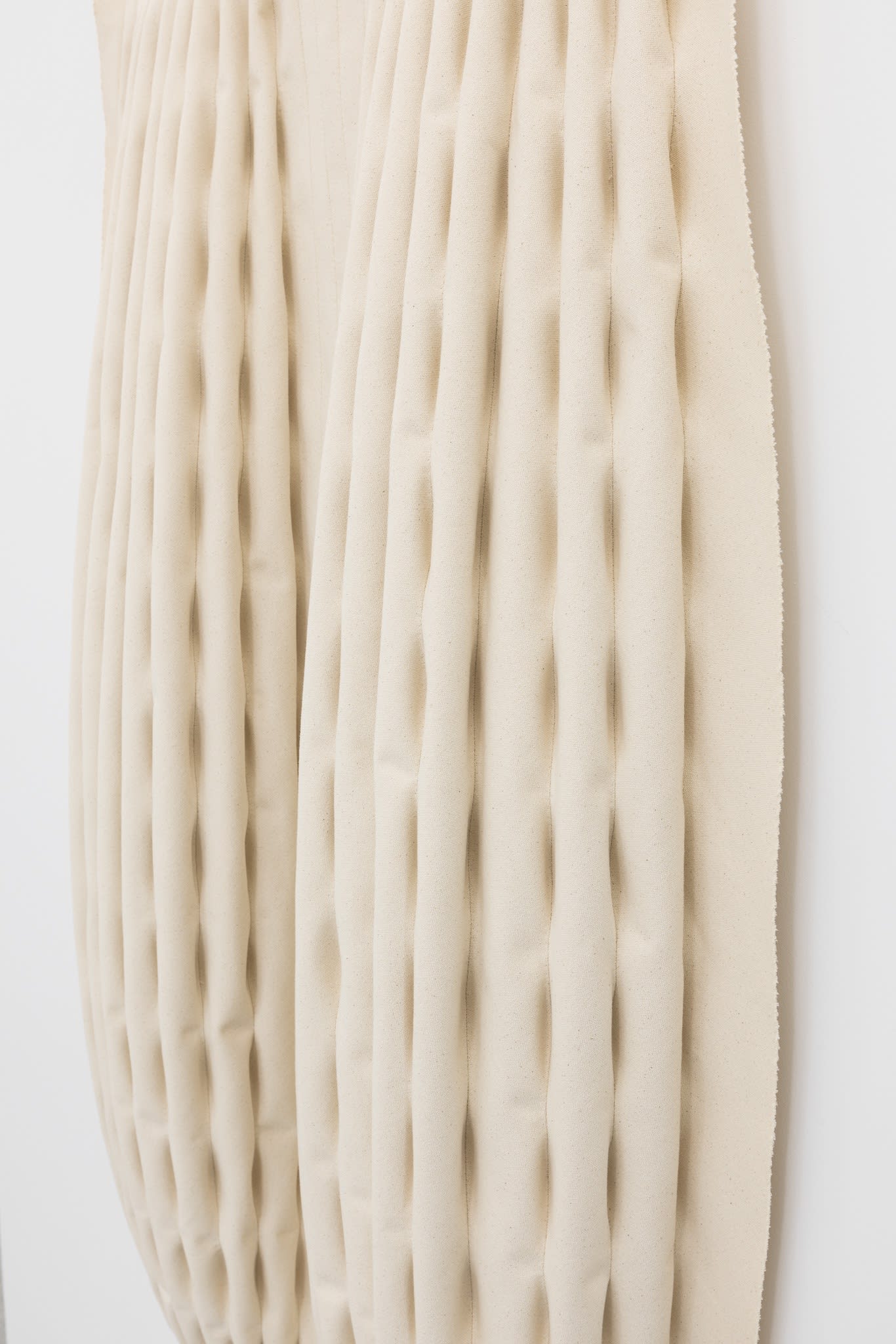
Detail of Dunbride, 2025
A+W: Can you share some insight into the titles of your works? Are they directly inspired by something specific, and do they have a connection to the pieces themselves?
LITTLE: Early on, my furniture pieces had anthropomorphic qualities, so I named them after people I knew—George, Valerie, Agnes. When my practice transitioned to sculpture, I realized my sensibility was shaped by the landscape of my childhood in Ireland. My first series, Drumlins, was named after the low rounded hills of this farmland, and each work was named after neighboring farming families. Over time, I’ve incorporated Scots-Irish and Gaelic names, as well as place names and geological terms from the region. I left Northern Ireland at age 21, and naming my work this way has helped me maintain a connection to my personal history and extended family.
A+W: Do you see your work as having a connection to traditional textile arts or craft, or do you view it more within the framework of contemporary fine art?
LITTLE: Fine art. That framing gives me the freedom to explore without constraints. If I positioned my work within traditional craft, I’d be measured against predefined expectations. In fine art, I create my own context and take full responsibility for how my work is seen and experienced.
Little in studio
A+W: Can you walk us through a typical day in your studio? Do you have any rituals or routines?
LITTLE: My week starts with admin and marketing all day Monday and Tuesday mornings. Then, I have the rest of the week in the studio...that sometimes flows into the weekend too. I work in a 1,300 sq. ft. space with three work areas: I’ve a large cutting table fitted with a 50’ roll of canvas, a grouping of six-tables for laying out multiple works at once, and a sewing area surrounded by mobile support tables.
I often work on three or four pieces at once, all at different stages. I’ve learned that I don’t naturally focus on one thing for too long, so this keeps me engaged. My process is slow, and one of my biggest challenges is balancing that with the demands of making a living as an artist.
The one unexpected tool I use in the studio is a Patternmaster ruler. Since I cut all my pieces on the bias, this tool is always by my side to ensure accuracy. Mine is metric, bought in London in the early 90’s, and like many of my tools, it has been with me for decades. I love that!
A+W: If you could have your work installed anywhere in the world, in any setting, where would it be and why?
LITTLE: I dream less of one grand installation and more of my work existing in homes across the world. I imagine a young child growing up with one of my pieces in their home, carrying its presence with them into adulthood, passing it on to their own family. That quiet, lasting connection matters to me—art becoming a part of someone’s daily life, through a lifelong relationship.

Mary Little
Little's work is featured in a three-person show at the gallery, Interwoven Gestures, alongside Sarah Giannobile and Re Jin Lee.
Born in Northern Ireland, Mary Little relocated to the United States in 2001 to join the faculty at California College of the Arts (CCA) in San Francisco. Trained as a furniture designer at the Royal College of Art in London, she has always approached her work through the lens of sculpture.
In 2015, Little made a deliberate shift in her practice, moving away from functional references to create more abstract works. This new direction was showcased in her 2018 exhibition at Craft Contemporary Museum (formerly CAFAM) in Los Angeles, followed by a solo show at Craft in America Center.
Little's work is housed in the permanent collections of The Bunker Artspace in West Palm Beach, the Vitra Design Museum in Basel, and the Musée des Arts Décoratifs in Paris. Her commissions and gallery pieces have been acquired by private collectors in Europe and North America, as well as by public institutions like the Victoria & Albert Museum in London. Her work has been featured in Architectural Digest, Galerie, and Surface magazines, and in 2022, she appeared in the PBS documentary Craft in America - Inspiration.
Little is also a 2019 recipient of the prestigious Pollock-Krasner Foundation Grant and currently resides in Los Angeles.
For more information on available works by the artist, contact gallery@ardenandwhitegallery.com
March 27, 2025

 Dunbride, 2025
Dunbride, 2025 Yew, 2024
Yew, 2024

